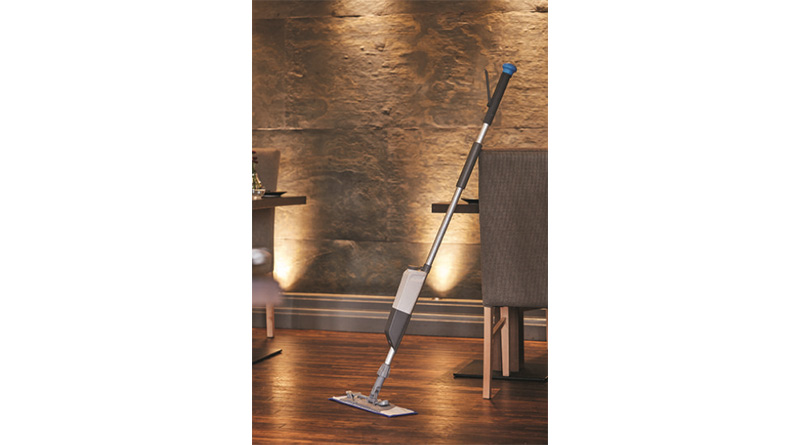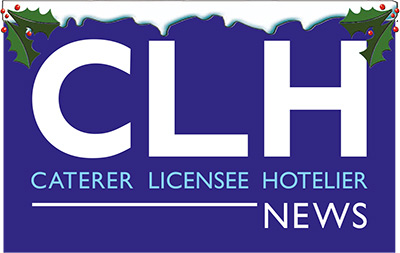Cleaning Considerations For The Hospitality Sector

By Kelly Brierley and Tom Capper, regional sales managers at Robert Scott (www.robert-scott.co.uk)
The hospitality sector has had to adapt at pace in the wake of Covid-19. From introducing one-way systems for customers and staff, to socially-distanced dining spaces and increasing the frequency of cleaning schedules for staff members.
For operators that don’t have access to dedicated environ- mental or janitorial departments to advise on best practice, what cleaning protocols should they be implementing to instil confidence in both staff and guests when the latest restrictions ease?
Robert Scott, one of the UK’s leading manufacturers and distributors of products for the janitorial sector, shares insight for businesses to navigate these challenging times, manage and reassure customers and how to implement the right cleaning processes with increased diligence for end-users.
THE IMPORTANCE OF VENTILATION
Maintaining good ventilation and air flow through your site is an important practical point, especially as we move into the colder months when customers may ask for windows and doors to be closed. If you have an internal ventilation system installed, increasing cleaning of these systems to prevent build-up of dust and other particles is key. High level cleaning tools are ideal for this job and can get into the external vents and high reach areas safely for more regular, effective cleaning.
MICROFIBRE CLEANING SYSTEMS
As one of the first companies to introduce microfibre products to the UK’s janitorial sector over 20 years ago, Robert Scott understands the capabilities of microfibre and why it’s a more efficient and sustainable choice.
Reusable microfibre is more cost-effective and can dramatically reduce the spend of blue roll where table surfaces require regular cleaning.This offers a great alternative given blue roll is a single use product and is far less effective than microfibre, which is designed to lift and remove debris.
Microfibre mops and cloths can be used with or without cleaning solutions.A non-chemical cleaning solution such as hypochlorous acid (HOCI) is beneficial, meaning staff and customers are not exposed to harmful chemicals in busy environments where the frequency of cleaning has increased.
HIDDEN TOUCHPOINTS
Educating staff to increase cleaning common touch points which can experience high volumes of human interaction, therefore easily transmit- ting and spreading viruses, is a crucial part of your cleaning regime.These touchpoints often include handrails, door handles, lifts and escalators, push plates, sinks, tables and so on. All surfaces can become infection breeding grounds so, where possible, leave doors open to avoid contact with these regular touch points.
If you are using a microfibre cloth, bear in mind that each cloth can be folded to give the user eight clean sides to use. Cleaning solution should be sprayed directly onto the surface or area in need of cleaning to allow for recommended contact time.The clean side of the cloth should then be used to lift and remove the debris from that surface.The cloth should then be rotated to a clean side so that every surface is contacted by a clean side to avoid cross contamination – particularly on hidden touch- points such as under tabletops and backs of chairs.
COLOUR-CODING SYSTEMS
Introducing a colour-coding system for your cloths and other cleaning equipment is a helpful way to make staff feel comfortable that they’re using the right products in the right areas and avoid any cross contamination.The British Institute of Cleaning Science (BICSc) developed a recommended colour chart for the industry using four colours of red, blue, green and yellow.These colours can be transferred as colour coding on cleaning equipment so that products can be used in specific areas.This helps to set apart these cleaning items to prevent the transfer of bacteria through cross contamination.
SAVE TIME WITH A RAPID RESPONSE SYSTEM
For busy hospitality environments with heavily trafficked areas, a quick- drying or rapid response system is much more efficient. By using a rapid response microfibre flat mopping system, you’re able to clean the affected area efficiently and causing a minimal amount of disruption.The fuss-free nature of microfibre also means staff are able to respond quickly to spills or accidents as less preparation is required, so any affected areas can be cleaned in a matter of moments.A flat mop which incorporates a spray handle is ideal here as it removes the need for buckets of water or constant wringing out.
In the same way that your chefs prepare ingredients for the next day, your cleaning regime should be the same. Ensure cloths, mops and other items are washed, folded and ready for the next staff member to use.
